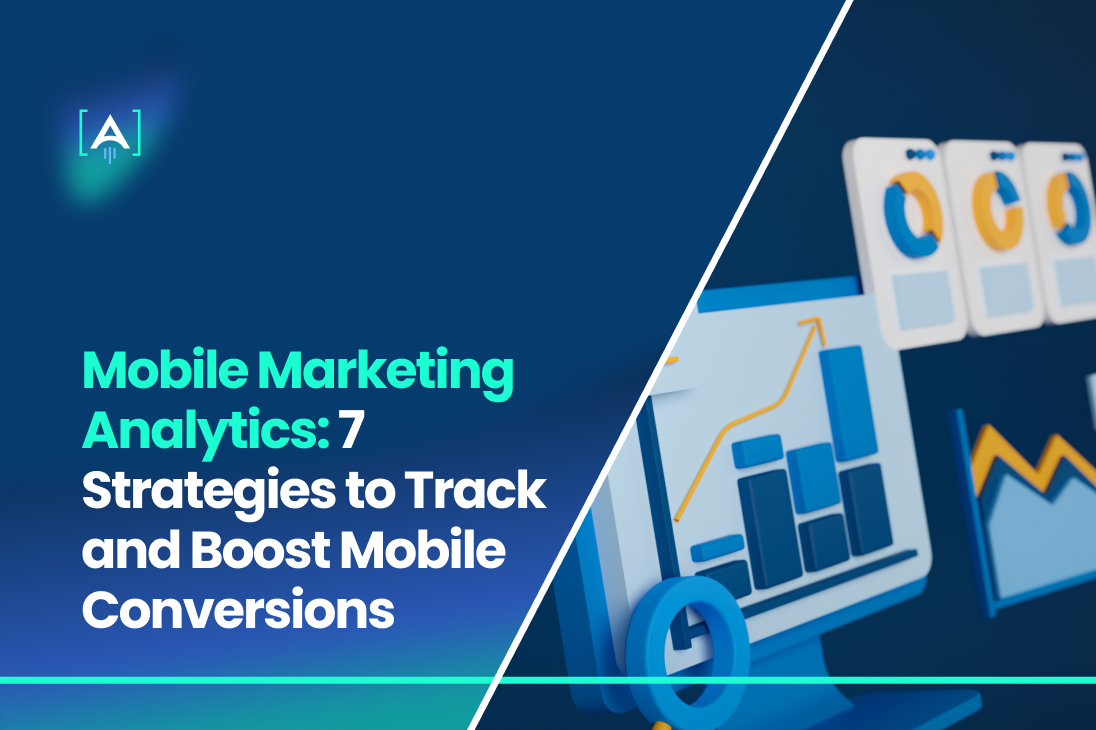Mobile marketing has emerged as a crucial component of any successful marketing strategy.
But how can businesses navigate the vast ocean of mobile data to make informed decisions and optimize their campaigns? The answer lies in mobile marketing analytics.
The size of the global mobile marketing market is projected to reach 57.85 billion dollars by 2030.
Source: Statista
This will signify a compound annual growth rate (CAGR) of over 18 percent. Accordingly, underscoring the growing demand for businesses partnering with a Marketing Analytics & Reporting Agency can be beneficial to effectively track, analyze, and optimize marketing performance.
The blog post will cover mobile marketing analytics and 7 essential strategies to track and boost mobile conversions.
Why Mobile Marketing Analytics Matters
Mobile marketing analytics plays a pivotal role in understanding how mobile users interact with your website, mobile apps, and marketing campaigns.
As more consumers shift toward mobile devices, tracking and analyzing mobile-specific data is essential for optimizing customer experiences and driving conversions.
54% of all website traffic is generated from mobile phones.
Source: Percentage of mobile device website traffic worldwide, Statista
Businesses that ignore mobile marketing analytics risk missing out on valuable insights into user behavior, which could significantly impact their bottom line.
Benefits of Mobile Analytics
Tracking mobile interactions provides several advantages for businesses, especially when paired with effective data analytics in a business.
Mobile analytics offers unique insights that can boost conversions, optimize customer engagement, and refine marketing campaigns.
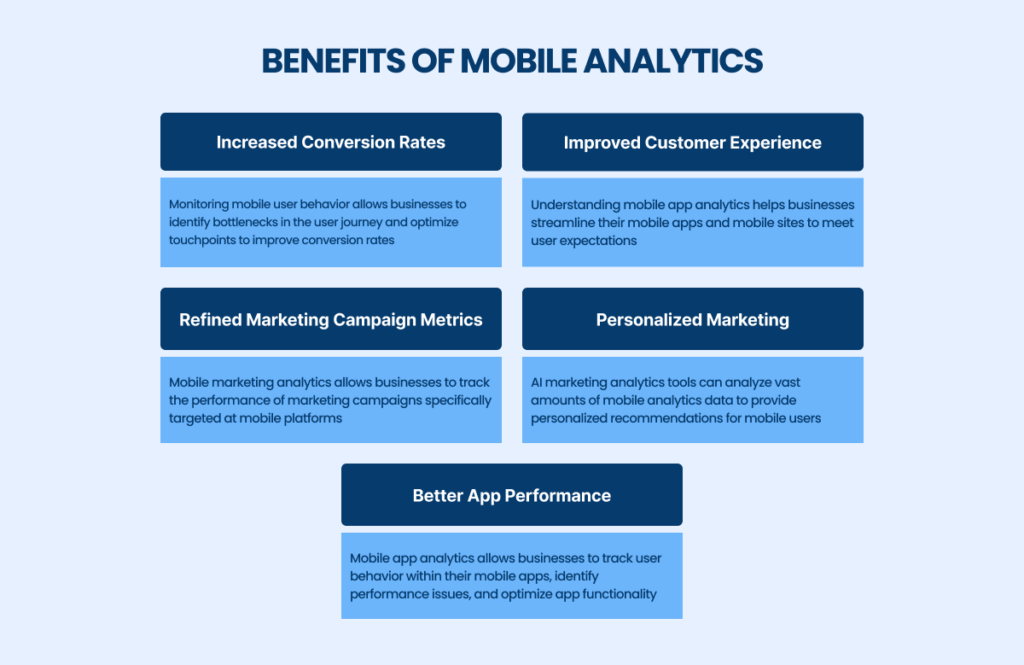
Key Metrics to Track for Mobile Conversions
Tracking the right metrics is essential to understanding how mobile users interact with your mobile platforms and how you can improve your marketing strategies to increase conversions.
Mobile marketing analytics provides insight into several critical metrics directly affecting your mobile conversion rates.
Conversion Rate
The conversion rate is one of the most important marketing campaign metrics, as it directly indicates the percentage of users who complete a desired action, such as making a purchase, signing up for a newsletter, or downloading a mobile app.
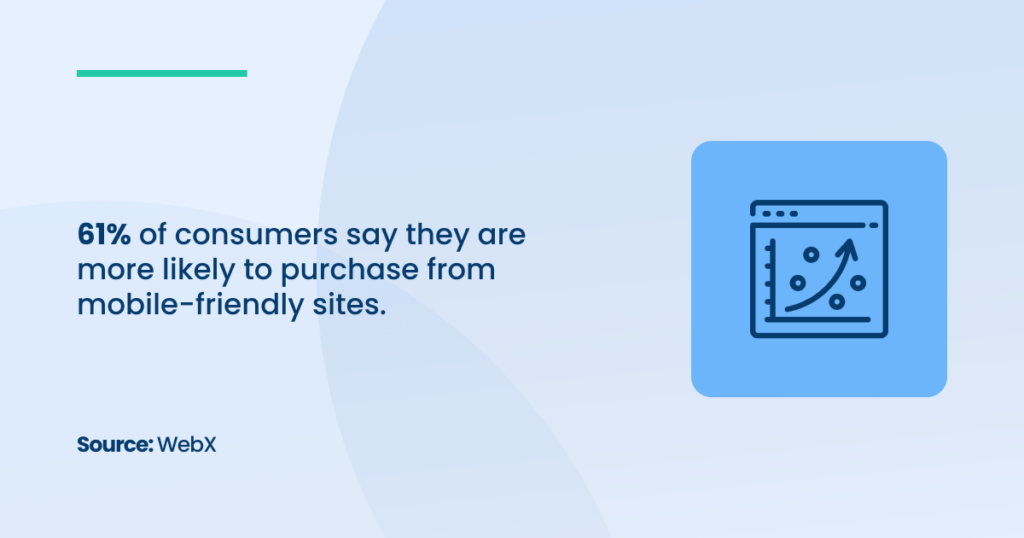
Tracking the mobile conversion rate is particularly crucial because mobile users behave differently compared to desktop users. They often navigate through content more quickly and expect a seamless experience.
Significance of Tracking Mobile Conversion Rates:
- Improving User Experience: Monitoring mobile conversion rates through mobile marketing analytics allows businesses to pinpoint areas where mobile platforms may fall short.
For example, a poorly optimized mobile site can deter users from completing conversions. Businesses can improve their mobile conversion rates by improving load times, simplifying the checkout process, and making the navigation intuitive.
- Optimizing Mobile-First Strategies: With more users accessing websites via mobile devices, focusing on conversion rate optimization for mobile users ensures that businesses stay ahead of competitors.
Mobile analytics data helps businesses create a mobile-first approach, enhancing the experience specifically for mobile visitors.
- Personalization Through AI Marketing Analytics: Businesses can personalize their mobile experiences based on user behavior by leveraging AI marketing analytics.
Tailoring recommendations, offers, and content to individual users can significantly increase mobile conversion rates.
- Enhancing Marketing Campaigns: Conversion rate metrics can be used to assess the success of various mobile-specific campaigns.
Marketing analytics consulting services can guide how to adjust campaigns to increase conversions, whether through influencer marketing analytics or mobile app analytics.
Tracking conversion rates on mobile platforms allows businesses to take data-driven actions that increase engagement and improve return on investment (ROI) from mobile users.
Bounce Rate
Bounce rate refers to the percentage of visitors who leave your mobile site after viewing only one page. A high bounce rate on mobile platforms can indicate that the user experience is suboptimal, whether due to slow load times, poor design, or irrelevant content.
Mobile users have less patience than desktop users, which makes optimizing bounce rates a crucial element of mobile marketing analytics.
Time on Site
Time on site measures how long a user stays on a mobile site or mobile app. This metric provides insights into user engagement and can indicate whether mobile users find value in the content they are viewing.
Time on site is particularly important for mobile platforms, as mobile engagement often differs from desktop engagement due to shorter attention spans and the mobile browsing environment.
7 Strategies to Track and Boost Mobile Conversions
The rapid rise of mobile usage has transformed how businesses approach digital marketing. With more consumers interacting with brands via mobile devices, it is essential to implement strategies that track mobile performance and boost conversions.
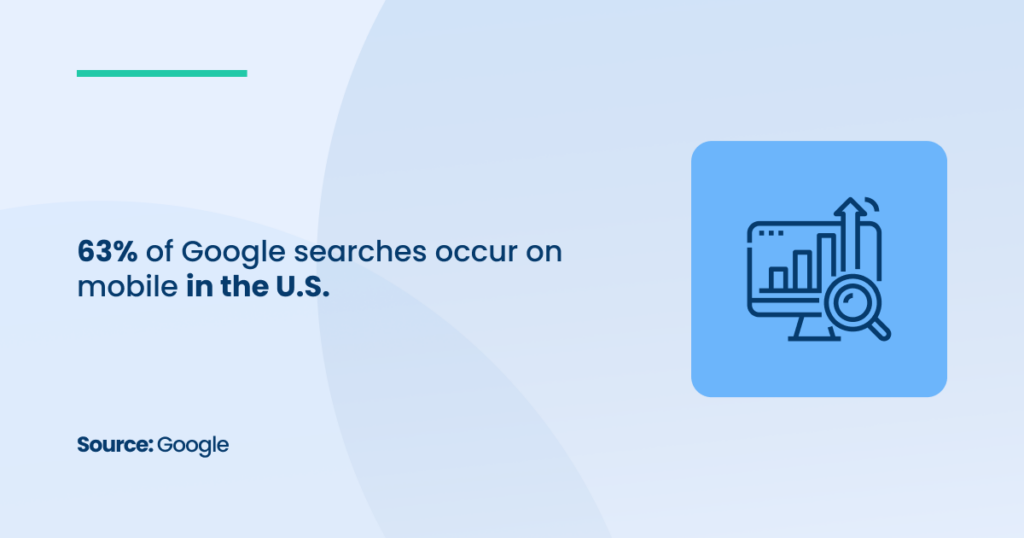
Using mobile marketing analytics, businesses can gain valuable insights into how mobile users interact with their apps and websites, enabling them to optimize these experiences and ultimately drive higher conversion rates.
1. Use Mobile-Specific KPIs
One of the most effective ways to track and boost mobile conversions is by selecting key performance indicators (KPIs) that focus on mobile interactions.
Traditional KPIs may not fully capture the unique ways that mobile app users and mobile site visitors engage with your content.
Mobile-specific KPIs are critical to ensuring that your marketing efforts are aligned with the mobile user experience, leading to better optimization and higher conversion rates.
It is important to measure how effectively users can navigate your mobile sites and mobile apps.
KPIs like tap-to-click ratios, page load times, and session length can provide deeper insights into user engagement.
For instance, slow loading pages on mobile platforms can dramatically reduce the chances of conversion, as mobile users tend to have shorter attention spans compared to desktop users.
By tracking these KPIs, businesses can take steps to optimize page speeds and streamline the user journey, ensuring a smooth and efficient experience.
Moreover, integrating AI marketing analytics into your strategy can further enhance the process of tracking mobile-specific KPIs. AI-driven insights allow businesses to predict future behaviors of mobile users based on past interactions.
This predictive power can help identify which areas of your mobile site or app need improvement to keep users engaged, reduce friction, and encourage conversions.
2. Leverage Mobile Heatmaps
Heatmaps are powerful visual tools that can show exactly where mobile users are clicking, scrolling, or tapping on your mobile sites and apps.
By leveraging mobile heatmaps, businesses can analyze user behavior to identify which areas of a mobile page are receiving the most attention and which parts are being ignored.
This insight can guide design decisions that boost engagement and, ultimately, conversions.
Mobile analytics platforms equipped with heatmap tools allow businesses to gather data on how mobile users interact with specific elements of a page, such as buttons, images, and forms.
For example, a heatmap might show that a call-to-action button is placed too low on a page, causing users to leave before scrolling down to see it.
By adjusting the design and positioning the button more prominently, businesses can increase the likelihood that users will engage with it, leading to higher conversion rates.
Mobile app users, in particular, benefit from optimized navigation and layout. Heatmaps can show which features are most used in a mobile app and which ones are being ignored or misunderstood.
This data can be used to streamline app functionality, making it easier for users to find what they need and boosting overall satisfaction and retention rates.
Additionally, heatmaps are valuable in influencer marketing analytics, where businesses can track how influencer-driven traffic interacts with their mobile pages and identify opportunities to optimize content for higher engagement.
3. A/B Test Mobile Landing Pages
A/B testing is a crucial strategy for improving mobile conversions, particularly when optimizing mobile landing pages.
Mobile users have different expectations compared to desktop users, and as such, businesses must ensure that their landing pages are fully optimized for mobile interactions.
Source: HubSpot
A/B testing involves creating two or more landing page variations and comparing their performance to determine which version yields the highest conversion rates.
The primary goal of A/B testing is to identify which design, layout, and content elements resonate most with mobile users.
Since mobile users often have shorter attention spans, landing pages that load quickly, feature minimal distractions, and include clear calls to action are more likely to convert.
Mobile marketing analytics tools can track key metrics during A/B tests, such as page load times, bounce rates, and click-through rates, helping businesses determine which version of their landing page is most effective.
One common focus of A/B tests for mobile landing pages is the placement of key elements like headlines, buttons, and forms.
For example, businesses can test whether placing a call-to-action button above the fold (the portion of the page visible without scrolling) results in higher engagement than placing it below the fold.
Mobile analytics platforms can measure the impact of these changes, providing businesses with concrete data on which layout is more successful at driving conversions.
Another area to test is the messaging and imagery used on mobile landing pages. Mobile users often prefer concise, visually engaging content that quickly communicates value.
A/B testing different versions of headlines, product descriptions, or images can reveal which combination is most effective at capturing attention and encouraging users to take action.
AI marketing analytics can enhance the process by analyzing user preferences and predicting which types of content are more likely to perform well based on past interactions.
4. Implement Mobile Retargeting
Mobile retargeting is a powerful strategy that helps businesses re-engage mobile users who have interacted with their app or mobile website but have not yet converted.
Mobile users are often more distracted than desktop users, meaning that they may leave a site or app before completing a desired action, such as making a purchase or signing up for a service.
By leveraging targeted ads and personalized messaging, businesses can bring these users back and boost conversion rates.
Strategies to Re-engage Mobile Users:
- Segment Mobile Audiences: Use mobile marketing analytics to segment your mobile users based on their behavior.
For example, users who abandoned a shopping cart may respond well to ads reminding them of the items they left behind, while those who browsed certain product categories might need an extra push with a discount offer.
Marketing analytics services can help businesses create precise audience segments to ensure that the retargeting ads are relevant and impactful.
- Dynamic Ads for Personalization: Dynamic retargeting ads are highly effective for mobile platforms because they allow businesses to display personalized ads based on a user’s past interactions.
For example, if a user viewed a specific product on a mobile website, dynamic ads can show them that same product, creating a more personalized and engaging experience.
Mobile analytics tools can track user preferences and serve the right content at the right time.
- Cross-Channel Retargeting: Mobile users are often active on multiple platforms, from apps to social media. To maximize retargeting effectiveness, businesses should implement cross-channel retargeting strategies.
This means using social media marketing analytics to track user interactions across platforms like Instagram, Facebook, or Twitter and re-engage them with ads that appear both in mobile apps and social media feeds.
A cohesive cross-channel approach can significantly increase the chances of conversion.
- Push Notifications and In-App Messaging: Mobile retargeting isn’t limited to ads. Push notifications and in-app messaging are also powerful tools for re-engaging users.
Personalized messages that remind users of unfinished actions or offer special promotions can drive them back to your app.
Marketing analytics solutions can help track how these messages perform and provide insights on how to refine them for better results.
5. Analyze User Flow in Mobile Apps
Understanding the user flow in mobile apps is essential for optimizing conversion funnels.
Mobile app users often follow unique and complex journeys compared to desktop users, making it crucial to map and analyze these journeys using mobile marketing analytics.
By identifying bottlenecks or areas of friction within the app, businesses can optimize the user experience, improve retention rates, and boost conversions.
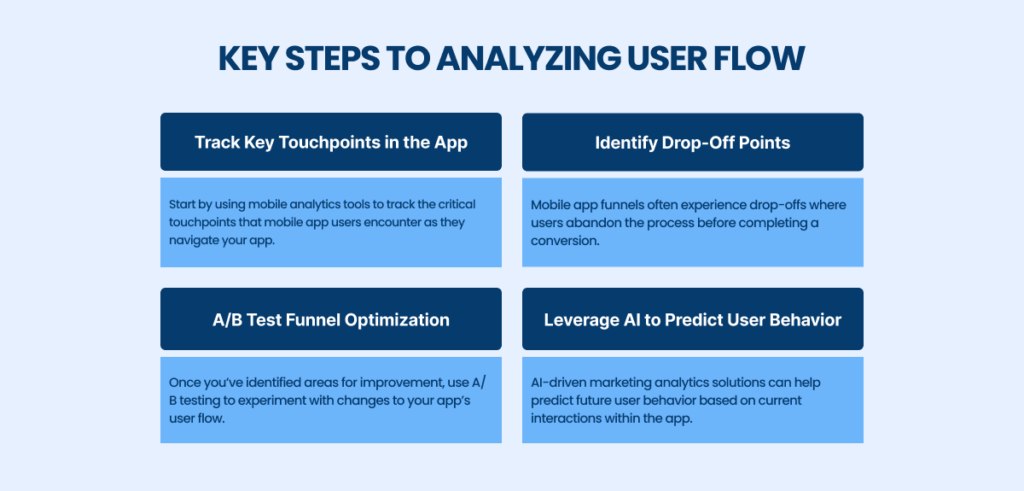
6. Track Mobile Campaign Attribution
One of the biggest challenges in mobile marketing is ensuring accurate attribution for mobile ads, emails, and social campaigns.
Attribution helps businesses understand which marketing efforts are driving the most conversions, allowing them to optimize their marketing spend accordingly.
However, mobile campaign attribution can be more complex than desktop attribution due to factors like multi-device usage and varied mobile platforms.
Strategies to Ensure Accurate Mobile Attribution:
Use Multi-Touch Attribution Models: Traditional attribution models like last-click attribution often fail to capture the full picture in mobile marketing. A multi-touch attribution model, which tracks all interactions a user has with your brand before converting, provides more accurate insights.
Mobile marketing analytics tools can assist in implementing multi-touch attribution, allowing you to credit each touchpoint in the mobile user’s journey.
Cross-Device Tracking: Many users switch between devices, such as moving from a mobile app to a desktop site. Cross-device tracking tools can help businesses ensure that conversions are correctly attributed, even if they occur on a device different from where the initial interaction happened.
Social media marketing analytics can help track how users engage with your brand across platforms and devices, providing a clearer attribution model.
Integrate Campaigns with Mobile Analytics Solutions: To track mobile ad performance accurately, businesses must integrate all their marketing efforts with mobile analytics solutions.
By consolidating data from different campaigns—such as email, social media, and paid ads—into a single analytics platform, businesses can have a more comprehensive view of what is driving conversions.
Marketing analytics trends suggest that businesses should focus on consolidating web marketing analytics, mobile analytics, and social analytics for more effective attribution.
Track Post-Click Engagement: Attribution should not end at the moment of conversion. Tracking post-click engagement can provide additional marketing data insights into user behavior and the long-term value of different marketing campaigns.
Mobile analytics tools can track whether users who converted through a mobile campaign continue to engage with your mobile app or mobile website, offering further insights into the effectiveness of your campaigns.
7. Optimize for Mobile Speed
Page load speed is one of the most critical factors affecting mobile conversions. In an age where users expect instantaneous access to information, slow-loading mobile websites or apps can lead to high bounce rates and abandoned conversions.
Ensuring that your mobile platform loads quickly is key to keeping users engaged and encouraging them to complete desired actions.
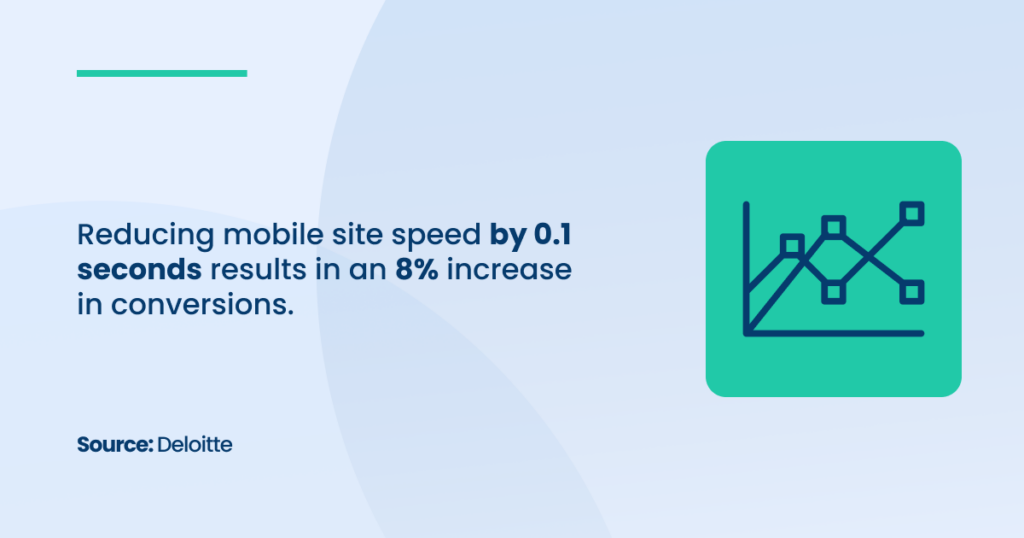
How Improving Page Load Speed Can Directly Impact Conversions:
- Faster Pages Lead to Higher Engagement: Studies show that a one-second delay in page load time can reduce mobile conversions by up to 7%.
Optimizing for mobile speed ensures that users stay on your site or app long enough to convert. Marketing analytics services can provide detailed reports on how page speed is impacting your bounce rates, helping you take immediate steps to improve performance.
- Optimize Images and Media: Large image files and media can significantly slow down your mobile platform. Using mobile analytics solutions to track page load times, businesses can identify which elements are causing slowdowns.
Compressing images, using lazy loading for videos, and reducing unnecessary elements can significantly improve load speed.
- Leverage Content Delivery Networks (CDNs): A CDN is a distributed network of servers that helps deliver content to users more quickly by reducing the distance between the server and the user.
Implementing a CDN for your mobile website can drastically improve page load times, particularly for users in regions farther from your hosting server.
Mobile analytics tools can track the effectiveness of these optimizations, allowing you to measure the impact on user engagement and conversion rates.
- Utilize Accelerated Mobile Pages (AMP): AMP is a framework developed by Google to help mobile pages load faster. AMP pages are lightweight and designed for mobile optimization, reducing page load times dramatically.
Businesses that want to ensure the fastest mobile experience for their users can implement AMP pages, and then use web analytics and mobile analytics tools to track the effect on mobile conversions.
- Minimize Third-Party Scripts: Third-party scripts such as social media widgets, analytics scripts, and advertising scripts can slow down your mobile website.
By minimizing the use of such scripts or delaying their loading until after the main content has been displayed, businesses can improve mobile page speed and, by extension, conversion rates.
By focusing on mobile speed, businesses can create a seamless experience for their users, reducing frustration and increasing the likelihood of conversions.
Marketing data insights from mobile analytics tools can guide continuous improvements, ensuring that your mobile platforms remain fast and user-friendly in an increasingly competitive mobile-first market.
Partner with [A] Growth Agency for Your Marketing Analytics & Reporting Solutions
Mobile marketing analytics is not just a tool.
It’s a strategic advantage that empowers businesses to stay ahead in the competitive world of mobile advertising.
[A] Growth Agency knows the way to success. We strongly believe in the power of data to inform and drive every strategy, ensuring our actions are as effective as they are innovative.
By utilizing data to optimize every step of the customer journey, we help businesses grow faster, smarter, and more efficiently.
Growth isn’t just what we offer. It’s who we are.
Remember this and decide your next steps.
